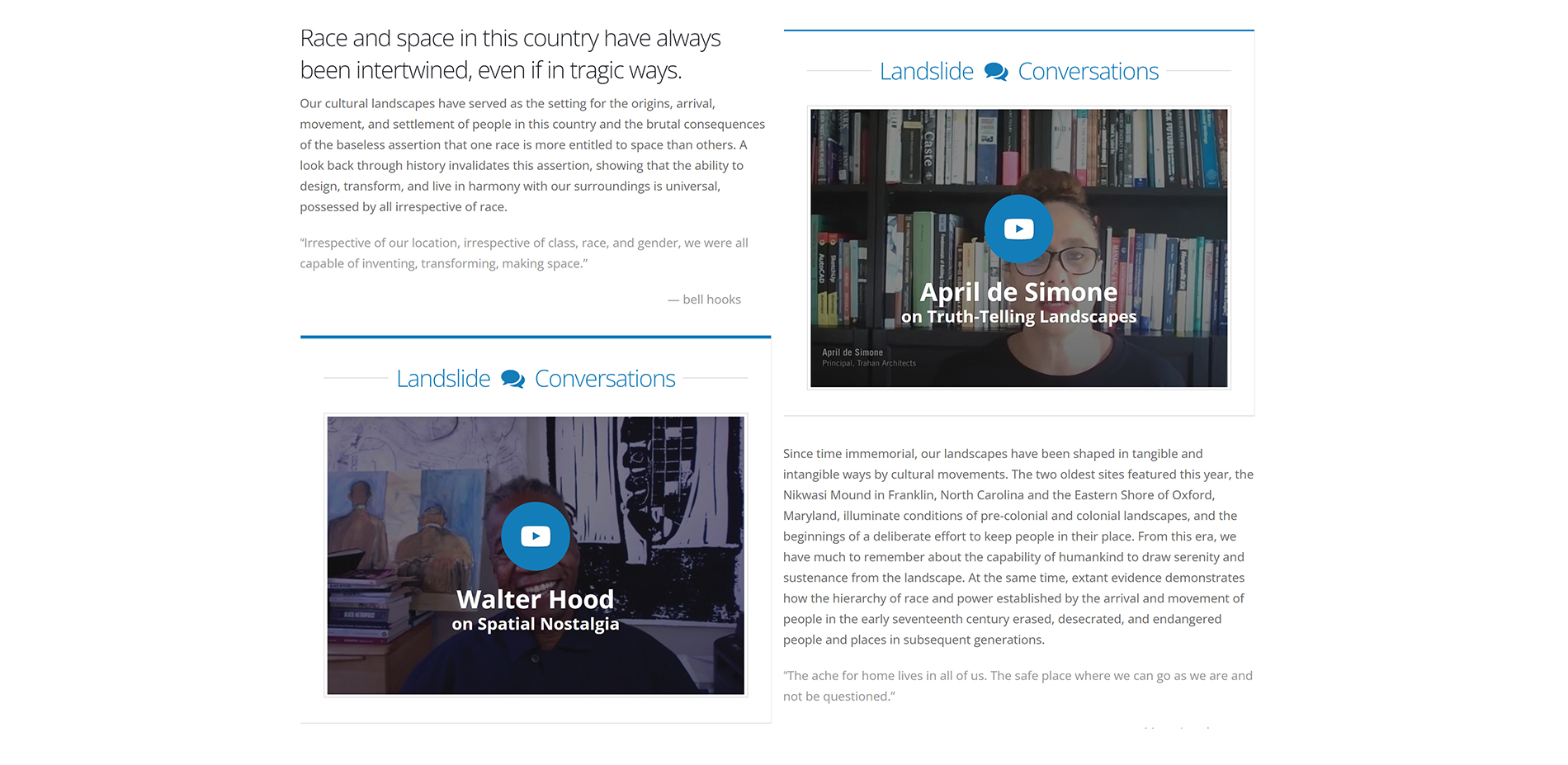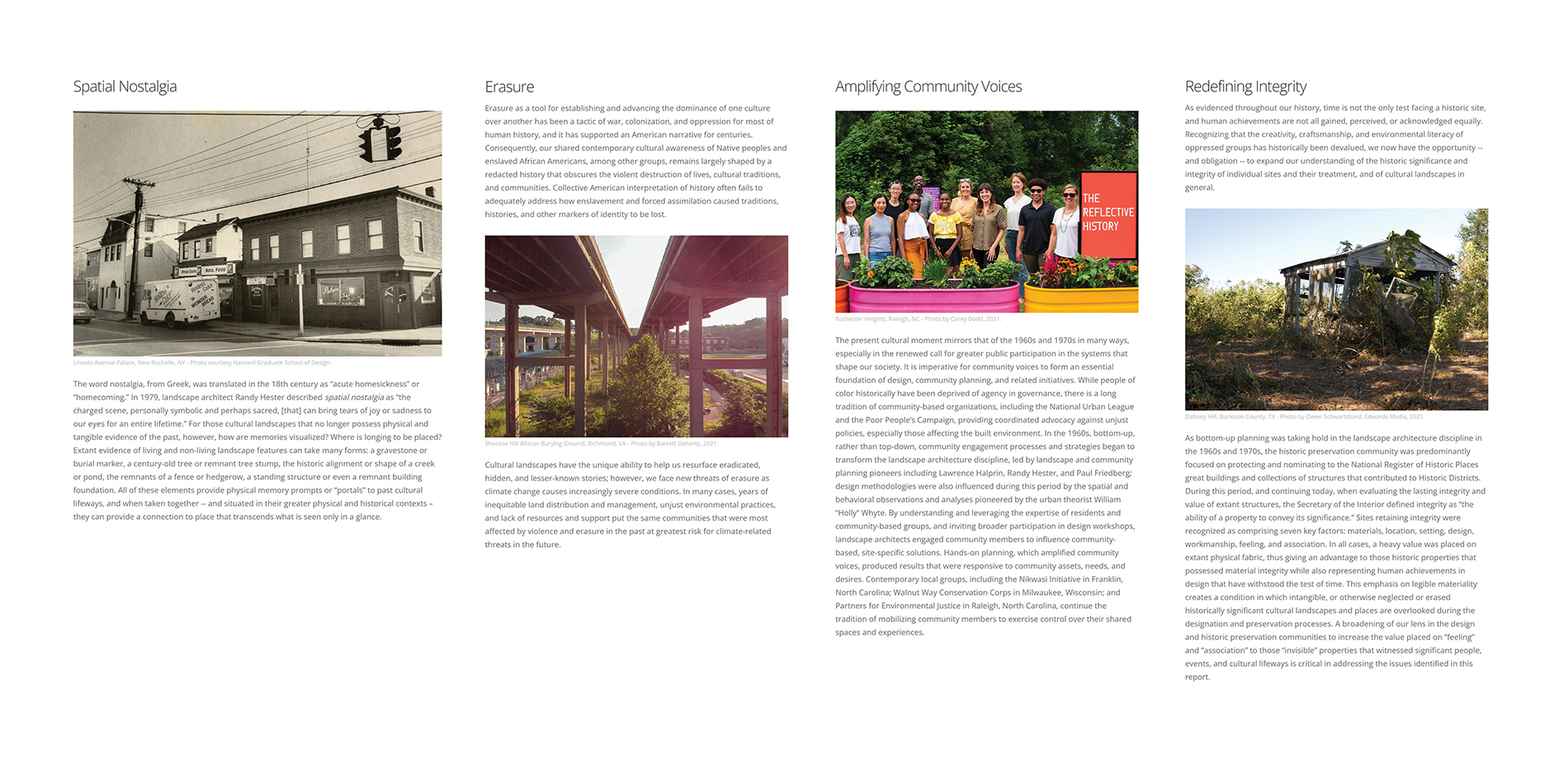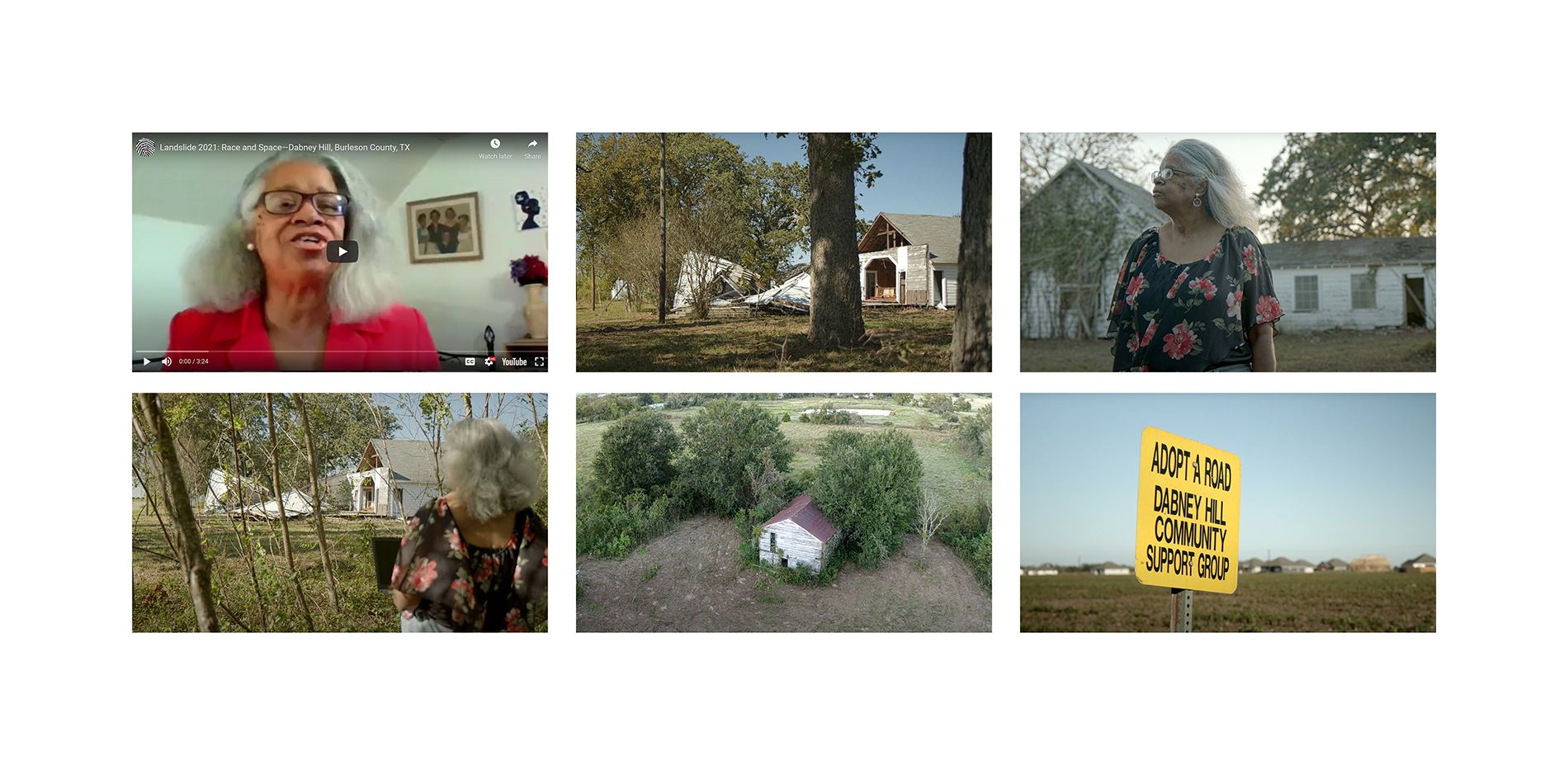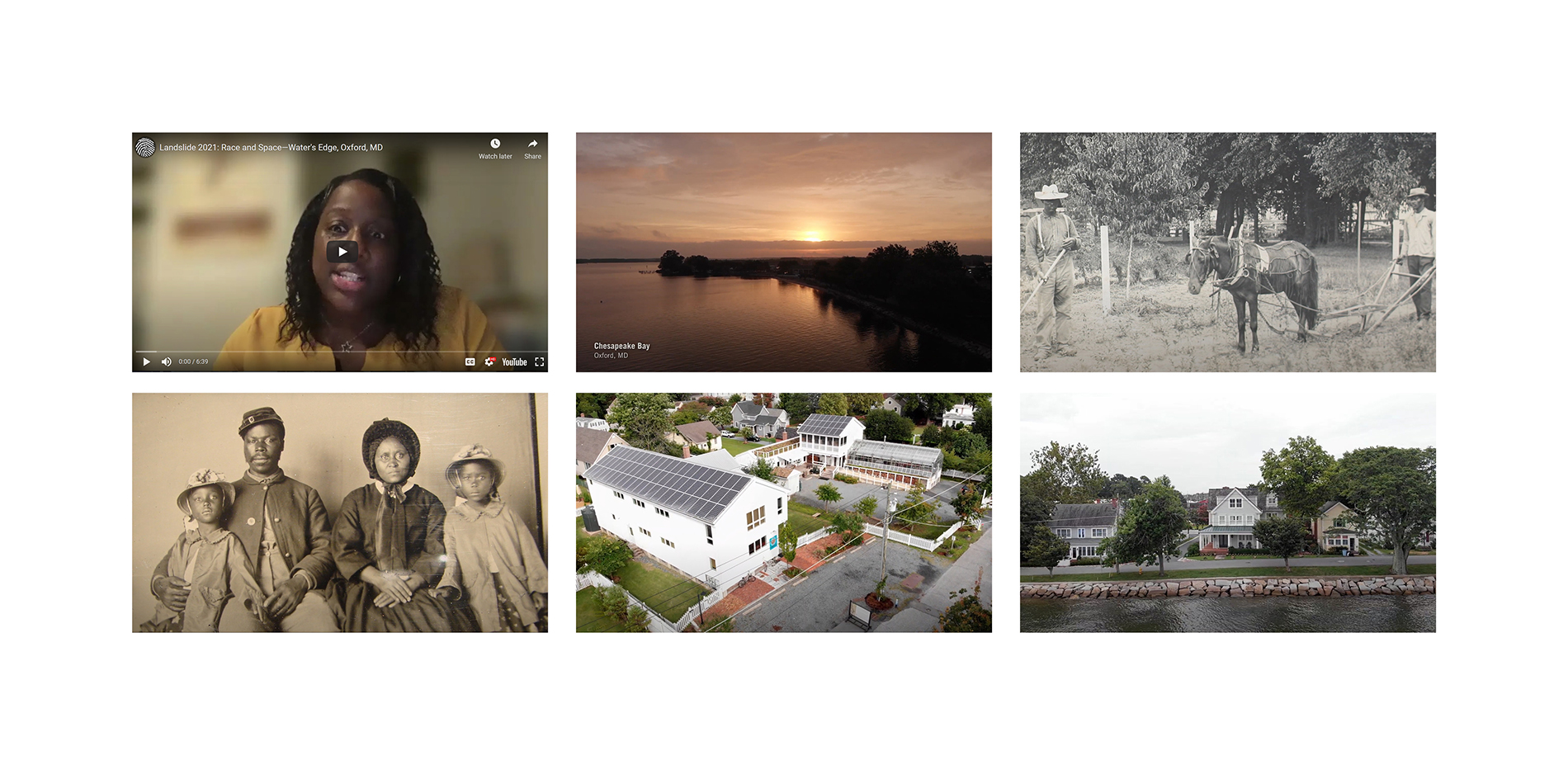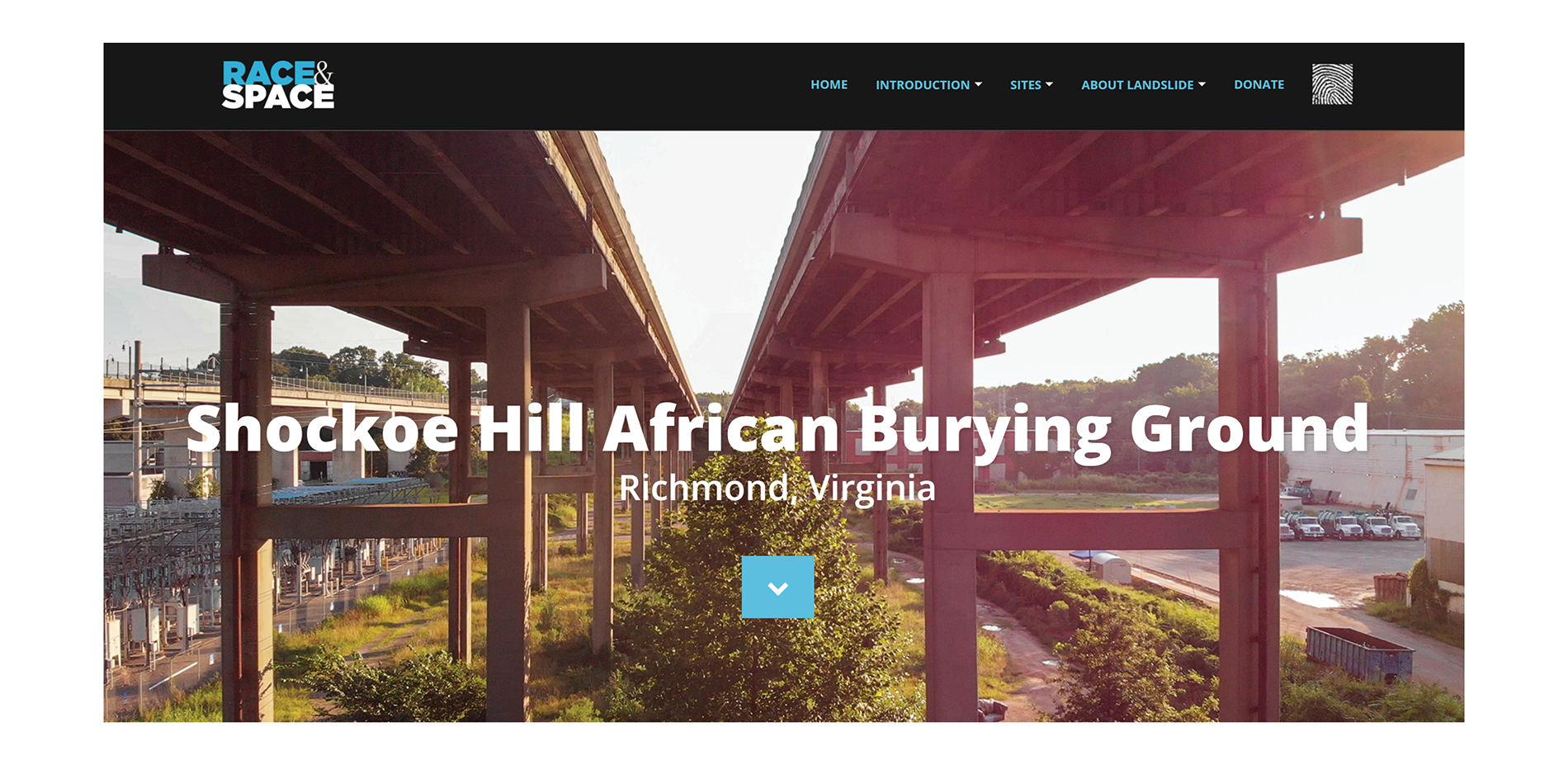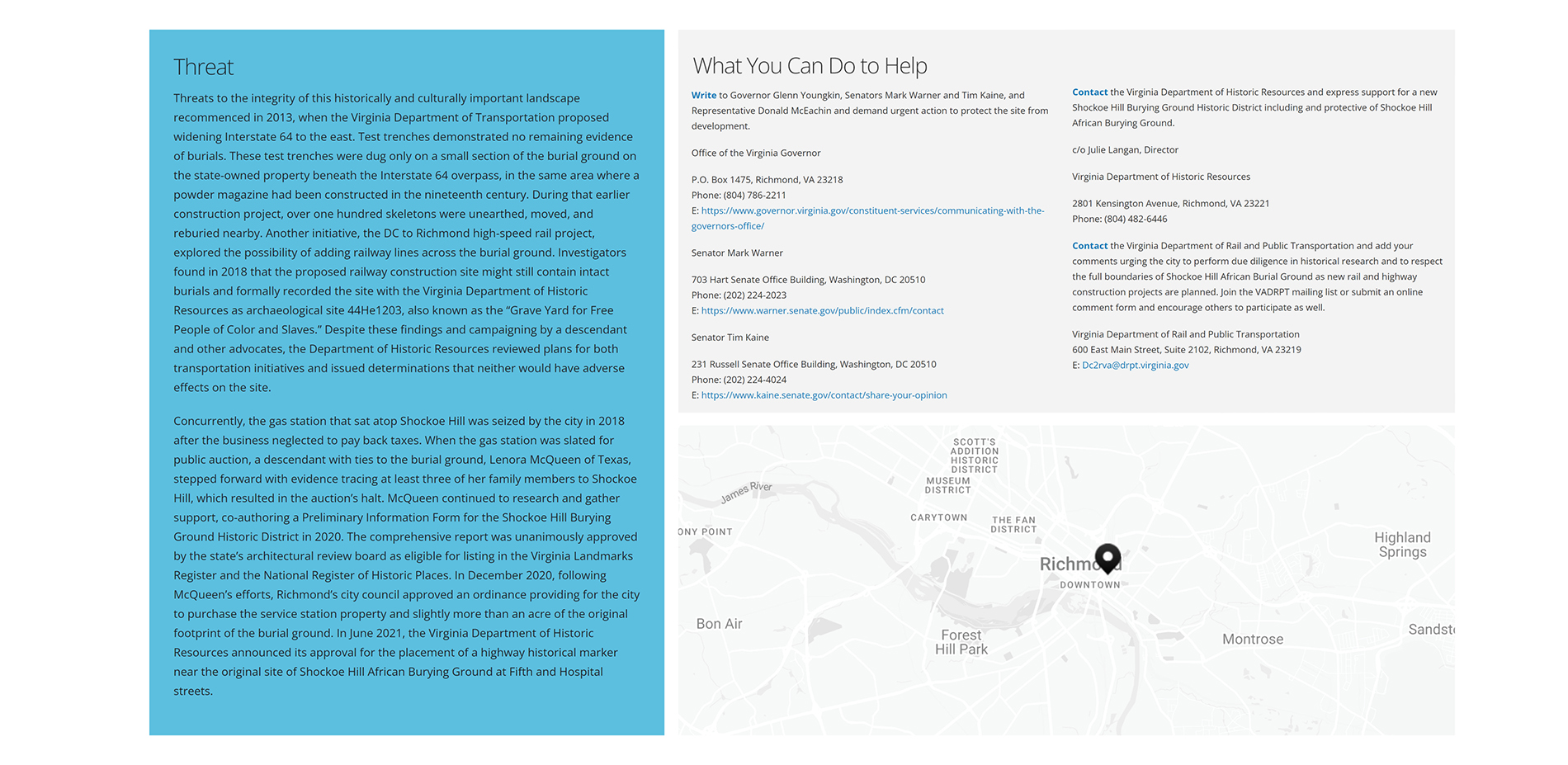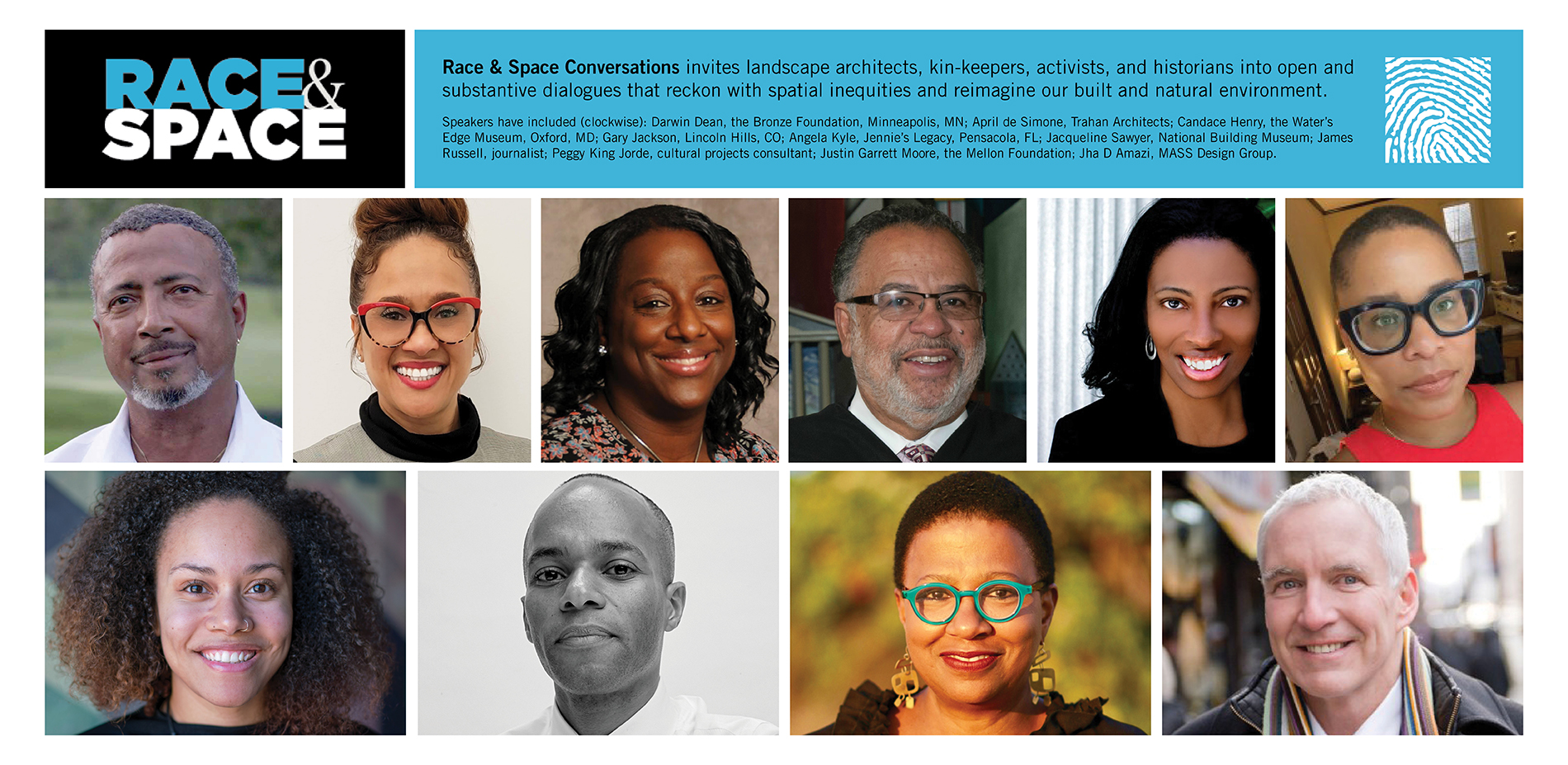Landslide: Race and Space
Honor Award
Communications
Washington, District of Columbia, United States
The Cultural Landscape Foundation
A testament to the remarkable power of stories, truth-telling, and oral history, this report is exquisitely conceived and documented, serving as an essential resource for the field of landscape architecture. The Race and Space report is impressive and moving, highlighting 13 threatened cultural landscapes associated with African Americans, Hispanic Americans, and Native peoples. Whether addressing repairing past harm or restorative justice, the jury appreciates the acknowledgment of recognizing the historical and cultural significance of American cultures that have been altered or erased. The submission provides digital access to places most have no knowledge of. It is a well-put-together catalog of stories and culturally relevant spaces—a moving compilation of voices that shine a light on injustices and present individualized calls to action.
- 2023 Awards Jury
Project Credits
Charles A. Birnbaum, FASLA FAAR, President and CEO, The Cultural Landscape Foundation
Nord Wennerstrom, Director of Communications, The Cultural Landscape Foundation
Celia Carnes, Project Manager, The Cultural Landscape Foundation
Justin Clevenger, Visual Content Director, The Cultural Landscape Foundation
Barrett Doherty, Photographer, Videographer, Editor - Barrett Doherty Images
Owen Schwartzbard, Videographer - Owen Schwartzbard
Dena Tasse-Winter, Writer, Editor
Project Statement
Landslide: Race and Space is a thematic digital report and exhibition about 13 threatened landscapes associated with African Americans, Hispanic Americans, and Native peoples. It includes an introduction detailing the historic relationship between race and space in America, an illustrated history of each site, common inequities and threats, defined as “throughlines,” and individualized calls to action. The digital exhibition also includes richly produced video interviews (2-5 minutes each) with landscape architects, historians, designers, and kin-keepers who offer compelling personal perspectives on the “throughlines” and bring to life each site’s history/significance. This time-sensitive report was produced in only three months in 2021.
Project Narrative
Purpose: The Landslide: Race and Space report and exhibition highlights 13 threatened US cultural landscapes associated with African Americans, Hispanic Americans, and Native peoples. The majority are not nationally recognized for their historical/cultural significance; some have been altered or erased.
Landslide includes an introduction detailing the historic relationship between race and space in the US, illustrated site histories, common inequities/threats, defined as “throughlines,” and individualized calls to action. Short video interviews with landscape architects, historians, kin-keepers, etc. also offer compelling perspectives on the “throughlines,” revealing each site’s history and significance.
Audience: Landscape architects, students, historians, African- and Hispanic Americans, immigrant communities, Native peoples, women’s history and urban studies, site stewards, policy makers, and the public.
Messages: The Landslide sites reveal local stories and global themes, shedding light on how settlement and removal, slavery and Jim Crow, urban renewal, and environmental injustice have shaped the land and continue to impact cultural lifeways and natural resources.
Critical to the examination of each site are 4 shared commonalities or “throughlines”:
[1] “spatial nostalgia,” for those cultural landscapes that no longer possess physical/tangible evidence of the past;
[2] “erasure,” as a tool for establishing and advancing the dominance of one culture over another;
[3] “amplifying community voices,” calls for greater public participation in shaping our society;
[4] “redefining integrity,” historic site designations informed by the Secretary of the Interior’s limited definition of integrity as “the ability of a property to convey its significance.”
One featured site, Richmond, VA’s Shockoe Hill African Burying Ground was, in the 19th century, the nation’s largest burial site for free and enslaved people of color, with over 22,000 interments. It has suffered more than a century of abuse and erasure. Now high-speed rail linking Richmond and Washington, DC could go through remnants of the site. The site entry includes a 5-minute video narrated by advocate Lenora McQueen whose fourth great grandmother, Kitty Cary, was an enslaved woman buried at Shockoe in 1857. All 4 throughlines are present at Shockoe.
Impact & effectiveness: Landslide was the focus of a sustained, comprehensive strategic media campaign that yielded national coverage (e.g. the New York Times, Washington Post); local/regional coverage associated with specific sites; industry publications (feature stories in Architect’s Newspaper, Landscape Architecture, etc.).
The interest generated by Landslide led to the creation of a series of free, online Race and Space Conversations, featuring landscape architects and others, that attract more than 500 virtual attendees per event. The report also led to a dedicated advocacy campaign by TCLF resulting in Shockoe Hill’s listing in the National Register of Historic Places in July 2022.
Distribution: A comprehensive, sustained strategic media strategy (see impact & effectiveness), inclusion in bi-weekly e-newsletters and dedicated e-blasts reach more than 31,000 recipients, TCLF’s YouTube channel, Landscape Architecture Magazine ad, and more.

